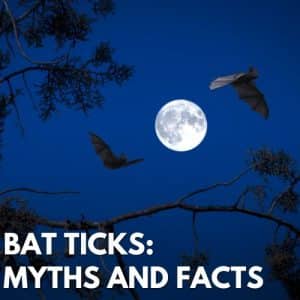
The ticks in Michigan have been booming since last year(2021). Reports state that these ticks have been increasing even in the Lower Peninsula, where occurrences were very rare to none. But these are generally found in the Rocky Mountainous regions of Michigan.
Warmer summers and wetter winters have led to the recent surge in the tick population. The most common ticks in Michigan are the deer tick and dog tick (Both the Brown dog tick and the American dog tick)
American Dog Tick:
These ticks are one of the most dangerous ticks as they tend to transmit diseases to both humans and animals. This tick is a three-host tick found in various parts of Michigan. The adult ticks prefer dogs as hosts.
What Do American Dog Ticks Look like?
American dog ticks belong to the hard ticks family. They are flat and oval in shape. They have whitish-grey markings on their backs. They are brown in color.
What are the characteristics of their bite?
The bite of the American Dog ticks is generally itchy. It is important to note that if there is a rash on the bite region. This may be an indication of diseases transmitted to the host.
Apart from being vectors of diseases, they may also transmit what is known to cause tick paralysis. Tick paralysis is a neurological syndrome that can lead to acute ataxia and paralysis. This is caused due to the salivary neurotoxin secreted by these tick species.
Disease Transmission:
After climbing on the host, these ticks cannot immediately consume blood. It takes time for the ticks to pierce the host. The disease transmission occurs if there is the consumption of blood for more than 36 to 48 hours.
The major diseases which the American Dog ticks can transmit are:
Tularemia and Rocky Mountain Spotted Fever.
It is important to seek advice from a medical practitioner immediately if there are any febrile symptoms on the host. It is best to remove ticks as soon as detected.
Habits of American Dog Ticks
American dog tick females lay up to 6,000 eggs during their lifetime. The eggs then develop into larvae. As the American Dog Ticks are three-host ticks, they tend to use the scent from the hosts to detect them.
So they are found where large mammals such as dogs and humans thrive the most. This includes roads, parks, etc. The American dog ticks, like any other ticks, have the questing behavior.
The American Dog Tick can Survive up to 2 to 3 years without being fed. The lifecycle of the ticks tends to take from three months to a year.
Deer Ticks:
The deer ticks are also known as Ixodes scapularis. These ticks are also known as western blacklegged ticks. These ticks have dark legs, and their body is broad, oval and flat, and orange in color. These ticks are hard-shelled ticks. They have scutum on their backs. Their mouthparts are visible from above.
Habitat and Infestation:
Wood piles and weeds are most common for the blacklegged tick to live in. They also thrive in short shrubs, tall grass, transitional forest areas, and in the nest and den.
Hosts:
The various hosts for nymph and larvae ticks are raccoons, mice, rats, squirrels, rabbits, etc. At the same time, adult ticks are mostly seen biting white-tailed deers. They tend to be infected by the Lyme disease bacterium as the white-tailed deer is a reservoir animal.
Habits:
Females feed for 4 to 5 days. They lay a few thousand eggs in a lifetime. These ticks are active in spring, and the temperatures are conducive during the spring months. But they can survive during the winter months too.
Disease transmission:
The blacklegged ticks can transmit microbes that cause diseases such as:
Borrelia burgdorferi (the bacterium which causes Lyme disease.)
They also transmit Babesia microti, which causes the disease babesiosis,
and human granulocytic anaplasmosis, which causes Anaplasma phagocytophilum,
Lone Star Tick:
Description:
These ticks are reddish-brown in color. They are oval and flat in shape.
Females can be 4- 6 mm in length. These ticks could swell up to 16 mm when not fed. After engorgement, these ticks can become slate gray in color.
Lone star ticks hosts:
Lone star tick larvae and nymphs prefer certain animals as hosts: They are cottontail rabbit, gray fox, raccoon, striped skunk, ground-nesting birds, cat, cotton rat and gray squirrel.
The adult lone star ticks prefer large mammals and birds such as foxes, dogs, cats, cattle, white-tailed deer, wild turkeys, and humans.
How To Prevent Ticks?
Ticks can be prevented using the following steps:
- Remove ticks from the skin if spotted.
- Look for infestation on pets and children or yourself
- Bath after coming back from tick-infested regions.
- Growing ticks that eat birds and animals could be useful.
- Spraying of pesticides on the yard
- Trimming long grass and weeds is also useful for killing ticks.
- It is essential to reduce time in tick-borne regions.
Conclusion
Ticks has become one of the greatest concerns in the United States that have become a vector in spreading many diseases. It affects your pets and humans that can lead to threatening consequences. So it is best to prevent ticks in your surroundings by taking necessary precautions recommended by the Michigan government and social communities.

